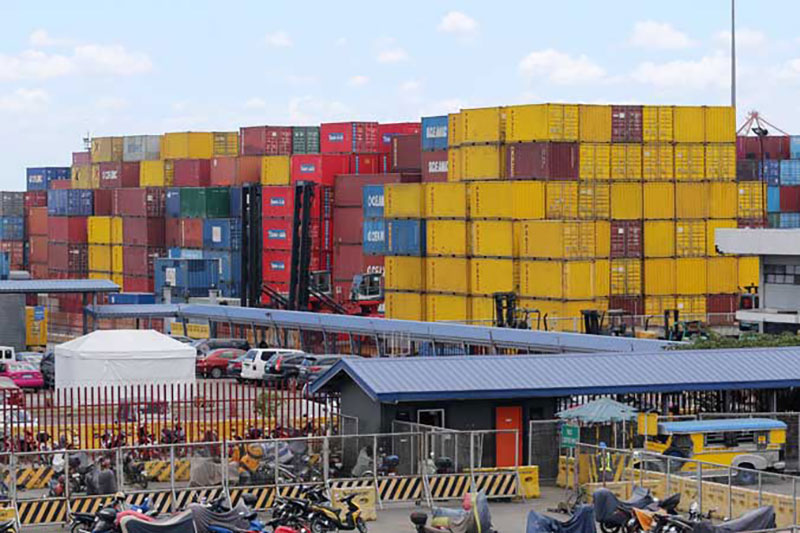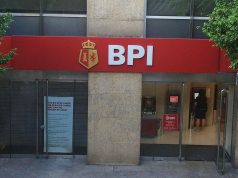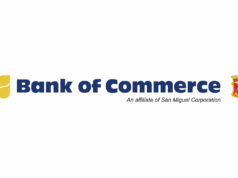PHL growth may settle at low end of gov’t goal due to trade risks

PHILIPPINE economic growth may settle at the low end of the government’s target this year due to global trade risks, the central bank said.
“Domestic growth is expected to settle at the low end of the Development Budget Coordination Committee’s (DBCC) target range of 5.5-6.5% in 2025,” the BSP said in its Monetary Policy Report for August 2025.
“The moderation in domestic growth prospects for 2025 stemmed mainly from the lower-than-expected growth outturn in Q2 2025 amid slower construction activity due to the election-related ban on government projects. This will be partially offset by the BSP’s monetary policy easing. Nonetheless, uncertainty over global economic policies, particularly the potential impact of US policies on global trade and investment, poses additional downside risks to domestic growth.”
Gross domestic product (GDP) grew by 5.5% year on year in the second quarter, bringing the first-semester average to 5.4%, just a tad below the government’s goal.
Last month, the BSP slashed benchmark borrowing costs by 25 basis points (bps) for a third straight meeting to bring its policy rate to 5%. This brought cumulative cuts since August 2024 to 150 bps.
“Potential output growth is expected to slow in the near term, as subdued investment demand weighs on productivity. This is consistent with estimates showing trend total factor productivity growth remaining below pre-pandemic levels,” the BSP said. “Nonetheless, the output gap is seen to gradually improve and turn broadly neutral by 2027, supported by a more accommodative policy stance and expected real wage increases.”
It added that GDP expansion could fail to meet the government’s goal next year before returning within target in 2027. The government is targeting 6%-7% growth in the next two years.
INFLATION
Meanwhile, results of the BSP’s survey of 23 external forecasters for August showed that analysts see inflation averaging 1.7% this year, down from the 1.9% in the July survey round, amid easing commodity price pressures.
This is below the BSP’s 2-4% annual target.
“Analysts cited the following upside risks to inflation: potential oil price hikes due to geopolitical tensions in the Middle East, rice-market policies involving the suspension of rice imports, and higher minimum wages. The downside risk cited was lower rice prices, which could weigh on the inflation outlook,” the central bank said.
The BSP likewise expects headline inflation to average 1.7% this year.
“The inflation outlook remains moderate over the near term. Inflation is projected to remain below the target range until Q4 2025,” the central bank said. “Compared with the previous round, the inflation projection for 2025 is slightly higher. This reflects the spillover effects of typhoons in July and the potential adverse impact of the approved rice import ban.”
In August, inflation picked up to 1.5%, faster than the 0.9% clip the prior month, bringing the eight-month average to 1.7%.
Analysts’ mean inflation forecast for 2026 also went down to 2.8% from 3%, while their projection for 2027 was unchanged at 3%.
The BSP said they expect inflation to pick up in the next two years but still fall within its 2-4% target.
“Higher electricity rates and possible base effects from higher food prices are expected to drive inflationary pressures in 2026,” the BSP said. “Inflation is projected to approach the upper end of the government’s target range in Q4 2026 before easing in 2027, although it will remain above the midpoint, as global commodity prices stabilize.”
The analysts in the BSP survey expect the Monetary Board to cut benchmark rates by an additional 25 to 50 bps for the remainder of the year and by 25 to 50 bps more in 2026. For 2027, they expect the central bank to keep its policy settings steady.
The survey results are as of Aug. 22 or before the Monetary Board’s Aug. 28 meeting where it delivered a 25-bp cut. — K.K. Chan



